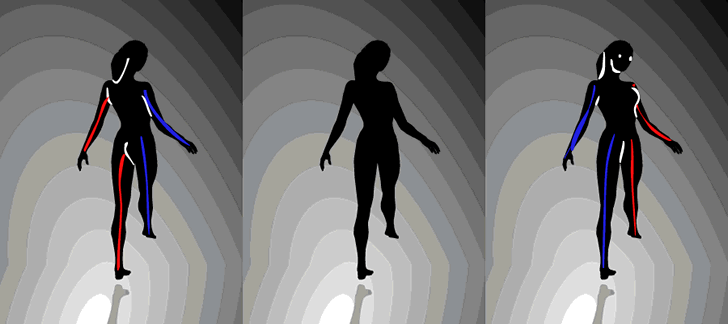The human brain is not an electronic device, much less a software-based device, and yet it is subject to some almost unavoidable errors.
<
The human brain is not an electronic device, much less a software-based device, and yet it is subject to some almost unavoidable errors.
<
An “error”, in computer terms, in some defect or failure in the system. And the human brain, as one of the most complex “computers” we know of, could not be left behind. Sometimes, our senses go into a state of confusion due to particular errors in the way we perceive and process information. You’ve probably already experienced some of these mistakes in your own flesh or, rather, in your own brain.
SEE ALSO:

This complicated term is used to designate what happens when people claim to see a saint in a stain on the wall or when we believe that a cloud takes on the shape of an animal. That is, when we interpret a totally vague stimulus as something full of meaning. Neuroscientists agree that this happens because our brains are used to looking for patterns all the time and giving them a logical explanation.

The Monte Carlo fallacy, gambler fallacy is the tendency of human beings to believe that events related to probabilities can be influenced by random events. For example, we roll a die three times and the number 2 lands on each of the rolls. What number do you think will fall next time? The tendency is to believe that, since 2 already dropped during the previous three releases, next time it will happen as well. But the probability remains the same on each of the shots for all six sides. This thinking error is responsible for causing many people to lose real fortunes in gambling.

The halo effect is responsible for judging a person by a single particular characteristic. For example, if you’re the head of a company and one of your employees is late for three days in a row, you’ll start classifying them as lazy, regardless of the results and efficiency they demonstrate after the delay.

Would you rather earn $20,000 immediately or $100,000 a year from now? If you ask that question with the money in hand to 10 people, nine of them will prefer the 20 thousand pesos at the moment. And this is a mistake in our brain.
Hyperbolic discounting or instant gratification means that we always opt for immediate benefits over long-term gratifications, even if this implies losses. This is what happens with all those people who prefer to buy something on credit instead of saving money and waiting a little longer to pay in cash, even if the interest to be paid is double the value of the merchandise in a single payment.

It is one of the most well-known errors of the human brain. The placebo effect occurs when a substance without any medicinal properties is given to a sick person with the promise that it will cure them and end up actually improving their symptoms. This phenomenon is so strong that it can produce physiological alterations in people, but, unlike a real treatment, these effects are temporary. That’s why the placebo effect is used in tests to determine whether or not a certain type of drug works.

The illusion of control is nothing more than the tendency we have to believe that we can control or influence events over which we have no control. When you get the result right in a dice roll, for example, the person interprets that as confirmation that they have some control over the event, without considering that, in fact, there was a 1/6 chance to get it right.

Some sites vehemently claim that this optical illusion defines which side of the brain we use the most, but in reality such a claim is nothing more than a rumor. The animation proves nothing and this “brain laterality test” is nothing more than a hoax. What makes you see the dancer spinning to one side or the other are other clues and brain predispositions that are somewhat more complex – and not fully understood. The top version of the image clearly demonstrates how easy and arbitrary it is to see the ballerina spinning to one side or the other. And it is enough to look at the side you want it to be rotating to be able to reverse the positions.
Related: The supermarket cart hides secrets to get you to buy more
Enter your account data and we will send you a link to reset your password.
To use social login you have to agree with the storage and handling of your data by this website.
AcceptHere you'll find all collections you've created before.
Comments